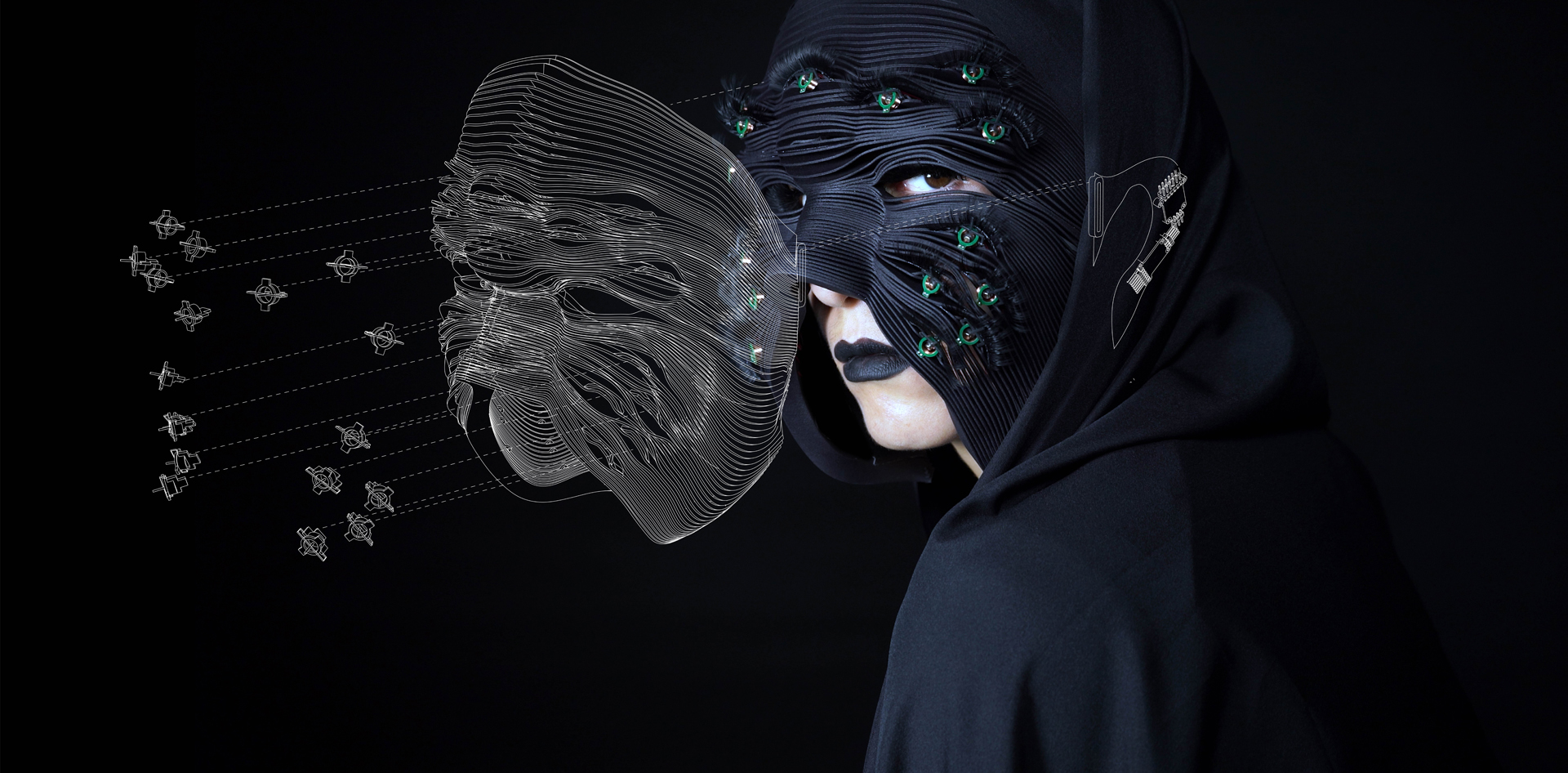Behnaz Farahi: “Can the subaltern speak?”: Critical Making in Design
Artist(s):
Title:
- “Can the subaltern speak?”: Critical Making in Design
Exhibition:
- SIGGRAPH 2021: Art with an Impact
-
More artworks from SIGGRAPH 2021:


Creation Year:
- 2021
Medium:
- 3D Printing and Artificial Intelligent
Category:
Artist Statement:
The Bandari women from the southern coast of Iran are famous for their intriguing masks, known as Niqab masks. Legend has it that the practice started during Portuguese colonial rule as a way of protecting the wearer, not only from the harsh sun of the Persian Gulf, but also from slave masters looking for pretty women. Viewed from a contemporary perspective, these masks can be seen as a means of protecting women from patriarchal and colonial oppression. In her seminal article “Can The Subaltern Speak?” feminist theorist Gayatri Spivak asks whether it might be possible for the colonized— the subaltern— to have a voice in the face of colonial oppression. How might we reframe this question in the context of contemporary digital culture? How could we find a way for the subaltern to speak that would also undermine the power of the oppressor? How could design problematize the existing cultural assumptions of patriarchy? A recent experiment involving two AI bots at the Facebook AI Lab could perhaps give us some insights. The intention was to monitor how two bots might develop a dialogue. However, the bots started to formulate a dialogue that no human could understand. The researchers conducting the experiment decided to intervene in order to stop this happening. Besides the fact that this experiment shows that AI can be used for natural language generation, this story also reveals how the authority of those in power can be undermined by that which they cannot understand. Knowledge is power, and an inability to understand unnerves those who wish to maintain their authority.
The use of code as a secret message also has an interesting history. As is well known, the Navajo language was used as code during World War II, while Alan Turing’s use of computation to crack the Nazi Enigma code helped to curtail that war. But there have been other examples since then. During an interview by his captors for a propaganda video in the Vietnam War, Admiral Jeremiah Denton secretly delivered the message ‘T-O-R-T-U-R-E’ in plain sight by blinking out the message in Morse Code, feigning trouble with his eyes from the bright television lights. More recently still, during the Coronavirus shutdown women have been using the code word ‘Mask 19’ to report domestic violence at pharmacies in France, inspired by a similar scheme in Spain.
This project presents a similar ‘experiment’ that brings these three examples together—the subversion of the Niqab mask, the unnerving behavior of the AI bots, and the use of code deliver secret messages— in order to develop a subversive strategy to empower women under patriarchy. Two masks begin to communicate with each other, blinking their eyelashes in rapid succession using AI-generated Morse code. Here the ‘wink’ of the sexual predator is subverted into a language to protect women from the advances of a predator.








